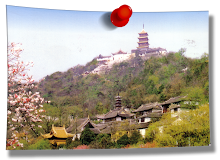
 Bulgaria, officially the Republic of Bulgaria, a country in the Balkans in south-eastern Europe, borders five other countries: Romania to the north (mostly along the River Danube), Serbia and the Republic of Macedonia to the west, and Greece and Turkey to the south. The Black Sea defines the extent of the country to the east.
Bulgaria, officially the Republic of Bulgaria, a country in the Balkans in south-eastern Europe, borders five other countries: Romania to the north (mostly along the River Danube), Serbia and the Republic of Macedonia to the west, and Greece and Turkey to the south. The Black Sea defines the extent of the country to the east.Bulgaria includes parts of the Roman provinces of Moesia, Thrace and Macedonia. Old European culture within the territory of present-day Bulgaria started to produce golden artifacts by the fifth millennium BC.
Currently Bulgaria functions as a parliamentary democracy under a unitary constitutional republic. A member of the European Union since 2007 and of NATO since 2004.
Bulgaria comprises portions of the regions known in classical times as Moesia, Thrace, and Macedonia. The mountainous southwest of the country has two alpine ranges - Rila and Pirin - and further east stand the lower but more extensive Rhodope Mountains. The Rila range includes the highest peak of the Balkan Peninsula, Musala, at 2.925 meters; the long range of the Balkan mountains runs west-east through the middle of the country, north of the famous Rose Valley. Hilly country and plains lie to the southeast, along the Black Sea coast in the east, and along Bulgaria's main river, the Danube in the north.
Currently Bulgaria functions as a parliamentary democracy under a unitary constitutional republic. A member of the European Union since 2007 and of NATO since 2004.
Bulgaria comprises portions of the regions known in classical times as Moesia, Thrace, and Macedonia. The mountainous southwest of the country has two alpine ranges - Rila and Pirin - and further east stand the lower but more extensive Rhodope Mountains. The Rila range includes the highest peak of the Balkan Peninsula, Musala, at 2.925 meters; the long range of the Balkan mountains runs west-east through the middle of the country, north of the famous Rose Valley. Hilly country and plains lie to the southeast, along the Black Sea coast in the east, and along Bulgaria's main river, the Danube in the north.































No comments:
Post a Comment